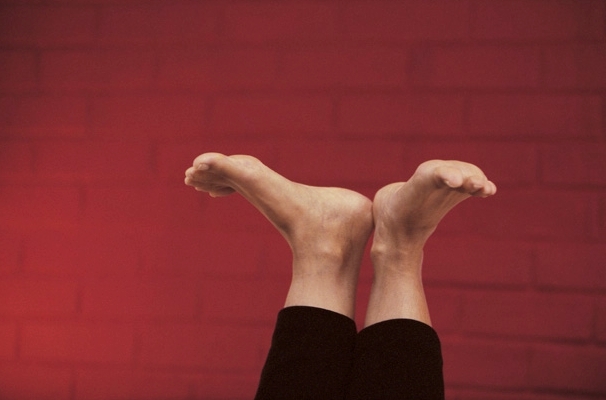
I put a lot of thought into a sneaker purchase. I do research to make sure the shoe I buy is designed to support my feet. On top of that, I’m overly concerned with finding a shoe that improves my athletic performance. It’s so time consuming and there are so many sneakers to choose from. Lately, I’ve been rethinking this whole approach on shoe selection by taking my sneakers off to workout. Barefoot training is a growing trend and it’s based on the fact that shoes can limit the potential of our feet.
Our feet actually lose their tactile capacity throughout a lifetime of wearing shoes. Constraining shoes limit free movement and flexibility. As a result, our feet may never develop to their proper size or shape. Tendons and ligaments shorten, muscles degenerate, and the risk for foot and ankle injuries increases. Shoes protect our feet in many activities, but overall neglect them from getting the exercise they need.
Barefoot training is an excellent way to strengthen the underused muscles in our feet. Now, I don’t recommend tossing your sneakers out and exercising barefoot all the time. Just add a few barefoot exercises to your workout routine and wear shoes for the rest. At times, barefoot training might challenge your comfort level. If you’ve ever gone for a run barefoot on the beach, you know that at the beginning it feels kind of awkward and even stressful on your feet. The first time I tried it, my ankles were sore for a few days. I realized my feet weren’t as strong as I thought.
By taking your shoes off for workouts you build the muscles on the bottoms of your feet, improve your stability, agility and balance. If you’re a cardio addict, going barefoot may help reduce injuries from pounding your feet to the ground. I highly recommend trying yoga and pilates. You can even weight lift barefoot. Just be sure to take your own mat to stand on if you’re headed to the gym (shared gym mats can transfer bacteria). If you’re repulsed by the idea of going completely barefoot there are sneakers that simulate the feeling and don’t require socks (Nike Free). Another option is a foot glove which is pretty funny looking but safe for street running. Most importantly, if you’re going to train barefoot take it easy at the start. Your foot muscles, tendons, ligaments and sensory receptors will be stimulated in new ways that might cause them shock. Be gentle, have fun and beg someone who loves you for a foot massage.
Check these links for additional information/research findings on barefoot training:
http://health.msn.com/fitness/articlepage.aspx?cp-documentid=100167637

